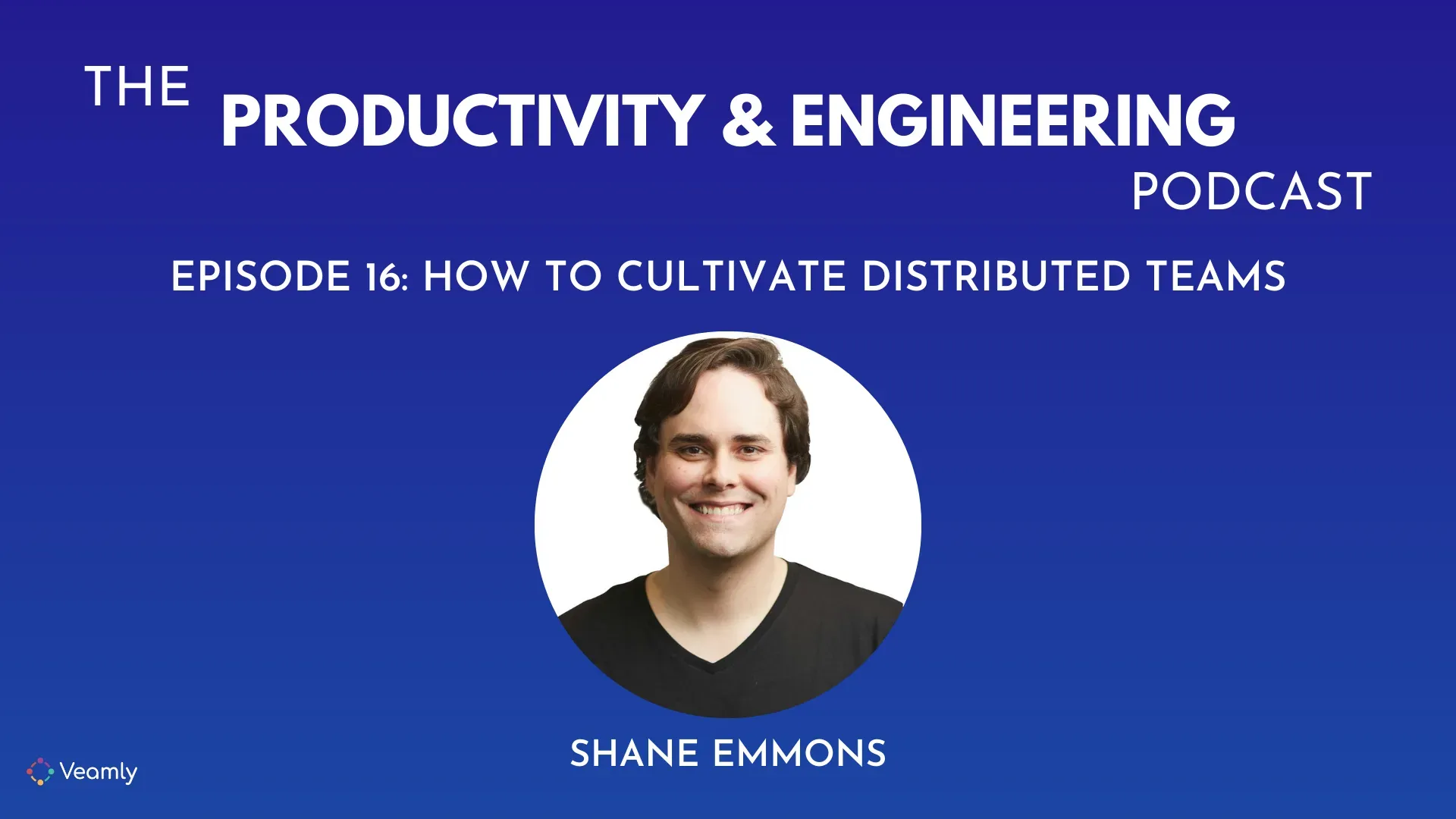
latest
November 4, 2021How to cultivate distributed teams
After spending a decade working for an insurance company, focused on data, Shane Emmons decided that it was time for a change. He founded his start-up in the education space for code schools, but that did not go as well as he wanted. He ended up joining another startup called TeamSnapp at a very early stage. He grew from an engineer to a CTO over the span of about three and a half years.
Ever since he became a CTO, he took TeamSnapp through an acquisition and then became a strategic advisor. Nowadays, he has also founded and joined other companies.
When it comes to managing his time, Shane says that it all comes down to the way he builds and grows his teams. He says that all the roles he plays don’t mean that he is always busy.
“ I tell any team I work with, I do not want to work with babies and I do not want to work with babysitters”.
If a team embraces that, they are able to complete a lot. When everyone handles their own work, the executives have more space to work on the business. Or work on multiple businesses, whatever it may be. He says that now his career is helping teams automate the companies he works in. The goal is that he and his team don’t have to be at the office as much.
The difference between a remote team and a distributed team as Shane explains it is that remote is about where you work and distributed is how you work.
When the pandemic hit, all teams became remote teams. Yet, when it comes to being distributed, you can be in an office and have a distributed team. What distributed means is giving autonomy to the team to make decisions and have ownership of their work. Giving them the freedom to move things forward as they best see fit with the least amount of overhead possible.
To have a successful distributed team, you have to find the right people. This is not an easy task. Although, according to Shane, this is a great investment for your company. It will help you build a solid team.
Shane’s top three tips for people who are wanting to lead distributed teams today are
- To trust the people you are working with. For that, you need to know how to measure the value they are bringing to the company.
- To transform that trust into ownership. Everybody in the company owns the work and is going to succeed and fail together.
- To take your time. Distributed teams take longer to ramp. But when they do, they have a much higher acceleration and velocity.
Shane Emmons switched from Scrum to Shape-up because he believes that people are not built for sprints, they are built for marathons. Shape-up, as opposed to Scrum, is a six-week marathon and then two weeks of recovery. Shape up makes teams wonder about how much time they are willing to spend on a task and how certain they are of that bet. If they are more than 70% confident that they can get that task done in that amount of time, then they do it. If it’s lower than 40%, then they shouldn’t take that risk. As Shape-up is more of a marathon and not a sprint, it allows the team to have a healthier work environment. This allows the team to understand what tasks are worth doing and focusing on. This allows the team to not drag on projects for weeks. Everything needs to be completed at the end of the six weeks before starting new tasks.
Shane Emmons shared with us that he does not like the idea of work-life balance. He believes, in work- life harmony. For that, he seeks work that brings him joy. He believes that if you are doing something you like, you will not work a day in your life. When you do something you love, work becomes a part of your life instead of balancing it with the rest of your life.
To have this harmony, Shane makes sure to structure his time in a very strict manner. He has very defined hours of when he is going to do things and what he is going to do, how much he is going to spend time on each task, and who do it.
He starts with a reflection each week on Sunday nights. He looks at his upcoming calendar as well as his past calendar to see what he has achieved. He considers his time in terms of percentage. How much of his time does he want to spend on what. He then allocates time accordingly to those percentages. He prepares his calendar for the week. Shane says that it is important to realize that you only have a 100% effort capacity. So you need to arrange your time according to those 100% and not more. If you spend less effort on one task, you can spend more effort on something else. But you cannot spend all your efforts on everything.
To make his whole team embrace the concept of Life Harmony, Shane Emmons believes in leading by example. "If you want your team to take care of their wellbeing and take time off when they need to, you need to start by doing it yourself." It is also about the company culture. People should feel comfortable bringing their whole selves, speaking about their feelings and opening up when they are burnt-out. By doing this, you are teaching the teams to take care of each other, so that you don't have to be taking care of each individual employee.
Thanks to this company culture that he created, Shane’s team was able to thrive during the pandemic, when many other companies were struggling.
Thank you for the registration
You are now subscribed to our newsletter